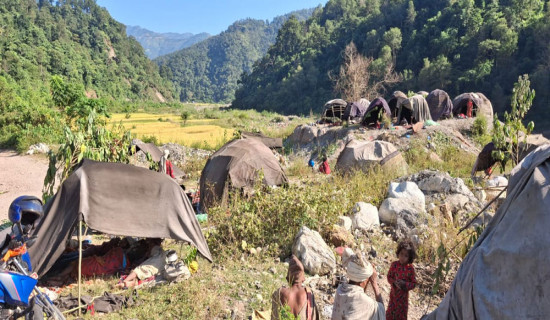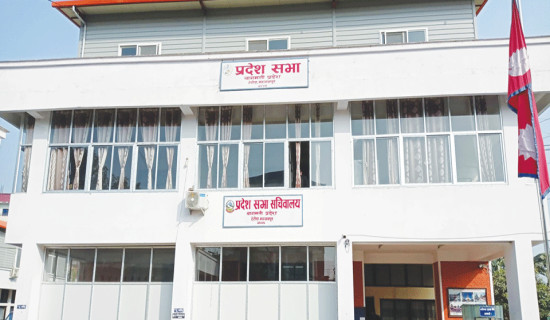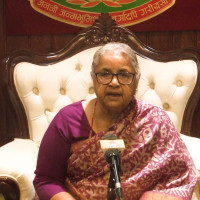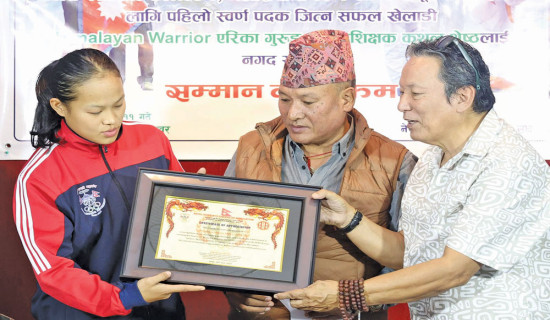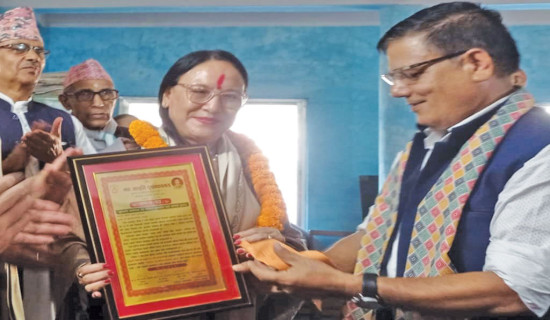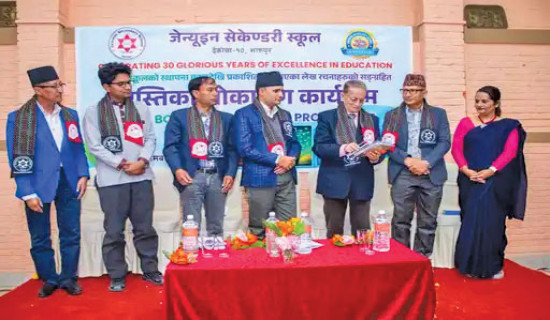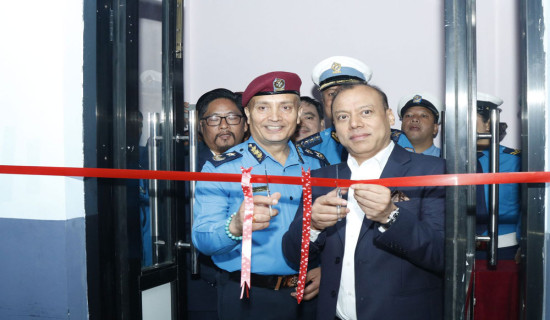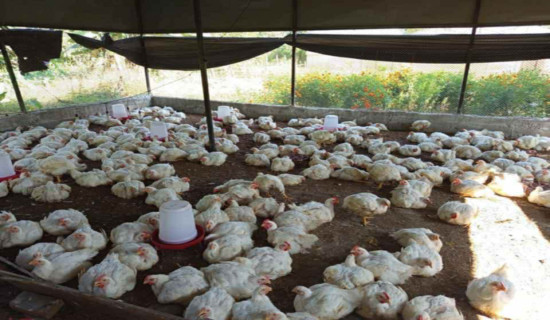- Wednesday, 29 October 2025
Mahabharat mountain trail route being mapped
By Puskar Bhandari
Dadeldhura, Nov. 11: The Mahabharat Mountains, stretching from Mechi in the east to Kali in the Sudhupaschim, serve as a lifeline for the local communities that reside around them.
The mid-hills of the Mahabharat, with altitudes ranging from 2,000 to over 2,700 metres, boast diverse geological features, natural resources, biological diversity and religious significance.
The water sources, various herbs, timber, stone, fodder and fuel-wood found in the Mahabharat region make the daily life of the locals easier. Historically, people used to live near the forests here to facilitate raising livestock. At present, the communication towers for phones, internet and TV installed on these high peaks make daily life easier for the modern generation.
The natural beauty of the Mahabharat Mountain Range is captivating, with expansive fields and scenic flowers. There is also a legendary stone with a supposed imprint of the five fingers of Bhim, a warrior from the Mahabharat epic, believed to have been made when he wiped his hand on the stone.
At the border of Amargadhi Municipality – 3 and Alital Rural Municipality -2 in Dadeldhura, one can still see the stone bearing the ‘five-finger mark.’ In Doti's Jorayal Rural Municipality, located at the foothills of Mahabharat, lies Bhim Chhedan Shila (stone), a stone said to have been split by Bhim's sword, according to local folklore.
Not far from Bhim's legendary stone is Ramshila, a stone with a water source beneath it located in Alital Rural Municipality - 2. According to legend, during the Treta Yuga, when Sita was thirsty while in exile, Lord Ram struck the stone with an arrow, causing water to flow, which is why it is called Ramshila.
On a high ridge in Bhageshwar Rural Municipality - 2, lies the temple of god Bhageshwar, after whom the rural municipality is named.
In Ganyapdhura Rural Municipality - 2, Dadeldhura, there is the temple of Lata Ganyap, a powerful deity after whom the rural municipality is named. In Jorayal Rural Municipality, Doti, lies the temple of Ghanteshwar Baba.
Alongside these temples of revered gods, there are numerous shrines of other deities within the Mahabharat range, according to Kailash Kumar Pandey, an expert in religious culture.
Nearly four decades ago, before road networks reached the hilly districts, locals would cross the Mahabharat Mountains on foot to reach Indian markets in Tanakpur to buy daily essentials.
For the first time, a budget has been allocated by the Sudurpaschim Province for the conservation and commercialisation of the religious and historic paths of the Mahabharat range.
Independent MP Dr. Tara Joshi, elected from Dadeldhura, along with a technical team, has been walking the Mahabharat trail to map the route connecting Ganyapdhura to Ghanteshwar and Bhageshwar temples.
On Friday, they camped overnight in a tent at Kafali in Alital Rural Municipality - 2 after a 12-hour hike from Hagulte in Ganyapdhura Rural Municipality - 1.
Dr. Joshi said that they plan to reach Bhageshwar Temple by the end of the second day of the trek. The Sudurpaschim Province government has allocated Rs. 2 million for the current fiscal year, with the Division Forest Office covering the expenses.
This initial phase involves a team comprising technical experts from the Forest Office, some private companies, local politicians, hikers, trekking enthusiasts and journalists, who are identifying the Mahabharat trail.
The allocated budget will support the development of the Lata Ganyap-Ghanteshwar-Bhageshwar religious trail for hiking and trekking purposes.



